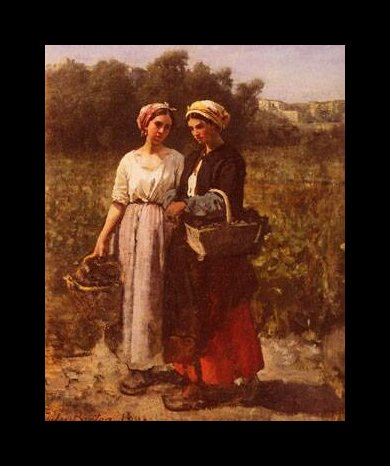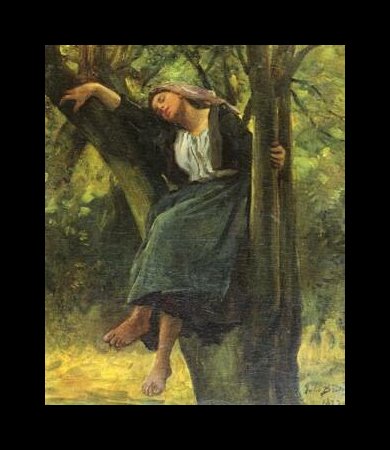Jules Breton (1827-1906)
Get a Jules Breton (1827-1906) Certificate of Authenticity for your painting (COA) for your Jules Breton (1827-1906) drawing.
For all your Jules Breton (1827-1906) artworks you need a Certificate of Authenticity (COA) in order to sell, to insure or to donate for a tax deduction.
Getting a Jules Breton (1827-1906) Certificate of Authenticity (COA) is easy. Just send us photos and dimensions and tell us what you know about the origin or history of your Jules Breton (1827-1906) painting or drawing.
If you want to sell your Jules Breton (1827-1906) painting or drawing use our selling services. We offer Jules Breton (1827-1906) selling help, selling advice, private treaty sales and full brokerage.
We have been authenticating Jules Breton (1827-1906) and issuing certificates of authenticity since 2002. We are recognized Jules Breton (1827-1906) experts and Jules Breton (1827-1906) certified appraisers. We issue COAs and appraisals for all Jules Breton (1827-1906) artworks.
Our Jules Breton (1827-1906) paintings and drawings authentications are accepted and respected worldwide.
Each COA is backed by in-depth research and analysis authentication reports.
The Jules Breton (1827-1906) certificates of authenticity we issue are based on solid, reliable and fully referenced art investigations, authentication research, analytical work and forensic studies.
We are available to examine your Jules Breton (1827-1906) painting or drawing anywhere in the world.
You will generally receive your certificates of authenticity and authentication report within two weeks. Some complicated cases with difficult to research Jules Breton (1827-1906) paintings or drawings take longer.
Our clients include Jules Breton (1827-1906) collectors, investors, tax authorities, insurance adjusters, appraisers, valuers, auctioneers, Federal agencies and many law firms.
We perform Jules Breton art authentication, appraisal, certificates of authenticity (COA), analysis, research, scientific tests, full art authentications. We will help you sell your Jules Breton or we will sell it for you.
Jules Breton was known as one of the ‘Little Masters’ of the Barbizon school. This term refers to those artists who did not quite obtain the status of the great Masters of this school, such as Jean Francois Millet, and Theodore Rousseau, but came close. The Barbizon school was of course also interested in rural peasant themes, as well as nature and landscapes, and Jules Breton was to become one of the primary painters of peasant themes in Nineteenth-century French art.

His family came from a small town in Northern France, called Courrières. Courrières was later on, to provide much inspiration for his work. His father was a landowner, as well as a supervisor to the land of the Duke of Duras. He also worked as an assistant judge, and mayor. His mother died when he was very young, and Breton and his siblings were raised by his father.
Breton always liked to draw, and the turning point in his young life came when the Belgian artist, Felix de Vigne came to visit, to look at his uncle’s collection of books. Felix de Vigne was also a Professor in the Academy of Ghent. During this visit, de Vigne saw some of the young painter’s work. He was very impressed with him and persuaded the young man to return to Belgium with him to study at the Royal Academy of Ghent. He then went to study in Antwerp, where he also spent time studying the Flemish Masters. Unfortunately, due to poor health, he was forced to return to Courrières, but later on that year he left for Paris, to study with the artist Michel-Martin Drolling.

The early death of his father meant that he was left virtually penniless, and he again returned to Courrières. Two paintings, which he exhibited in the Salons of 1849 and 1850, depicted some of the challenges that he himself was facing. The painting in the Salon of 1849 was entitled, ‘Misery and Despair’, and in the Salon of 1850, he exhibited a painting simply entitled, ‘Hunger’.
He then went on to produce paintings depicting rural peasant life, and he took his inspiration from his native village of Courrières. The first large painting which he was to produce in this genre was entitled, ‘The Return of the Reapers’. This is now in a private collection in Belgium.
The act of gleaning the remains of the wheat, a task reserved at the time for women and the poor, became a favorite theme of his in the 1850s. A painting entitled, ‘The Gleaners’, was to win a medal at the Salon of 1855. Elodie de Vigne, who acted as a model for this painting and was the daughter of his teacher Felix de Vigne, was to become his wife in 1858.

The painting, ‘The Gleaners’, was to have social and political consequences. It won a medal at a time, when the rights and status of the gleaners within French peasant communities was being brought into question.
Jules Breton was a very successful artist of his time and his work was much sought-after in France and internationally. He was particularly popular with American collectors. Indeed, his work is well-represented in a large number of museums in The States. Two paintings, which are in the Metropolitan Museum of New York, are a typical representation of the work he produced, drawing his inspiration from the peasant population. ‘The Weeders’, is a replica, with minor variations of a composition Breton painted in 1860, and exhibited in the Salon of 1861.The second painting, ‘Peasant Girl Knitting’, is typical of the type of inspiration he drew from scenes of peasants, and rural life.
As well as being a talented artist, he was also a talented writer and published several books and volumes of poetry.
Anyone in America wishing to see his work has a good selection of museums to choose from. His paintings can be found in the Art Institute of Chicago, the Cleveland Museum of Art, and the Metropolitan Museum of Art, to name but a few. The fact that Jules Breton was so successful in America makes it highly probable that there are some forgotten masterpieces hanging on walls, the value of which may be unbeknown to their owners.
Jules Breton art authentication. Jules Breton appraisal from . Jules Breton certificates of authenticity (COA). Jules Breton analysis, research, scientific tests, full art authentications. We will help you sell your Jules Breton or we will sell it for you.

Reviews
1,217 global ratings
5 Star
4 Star
3 Star
2 Star
1 Star
Your evaluation is very important to us. Thank you.
